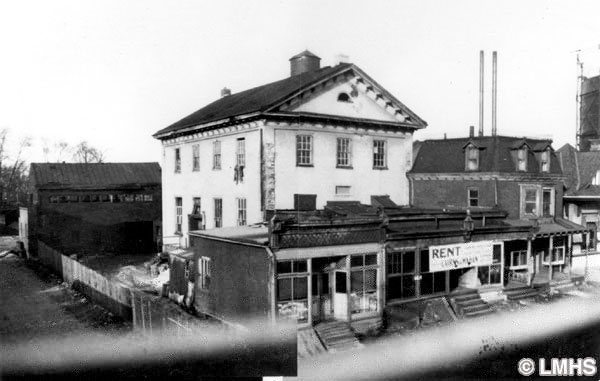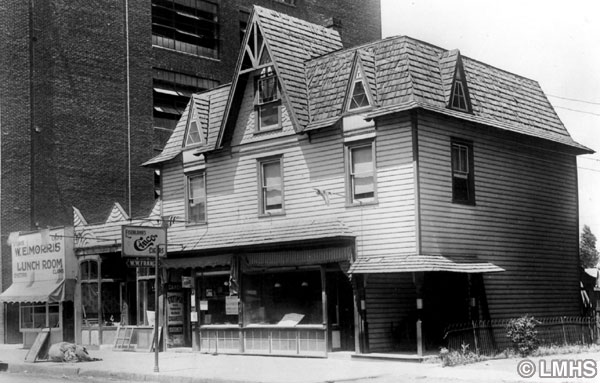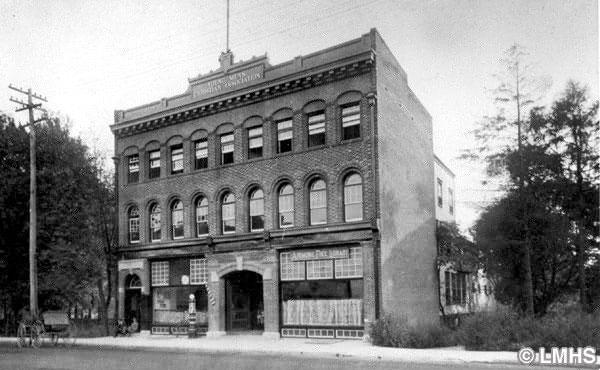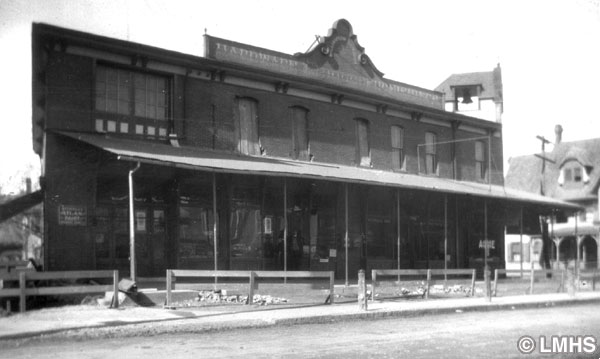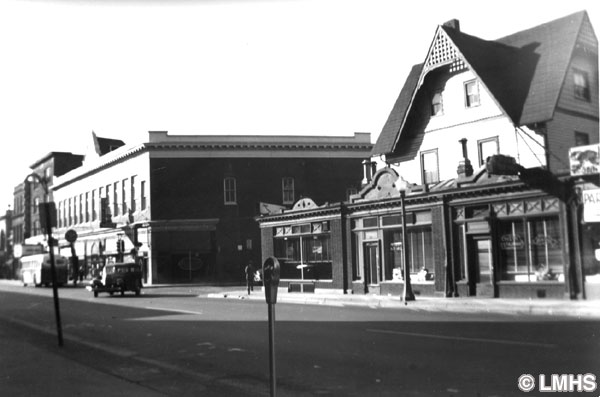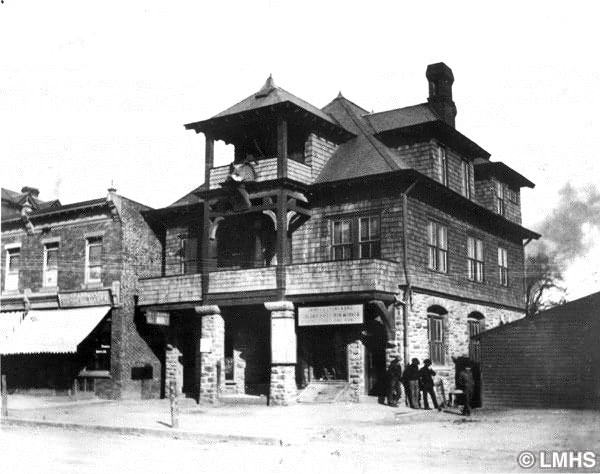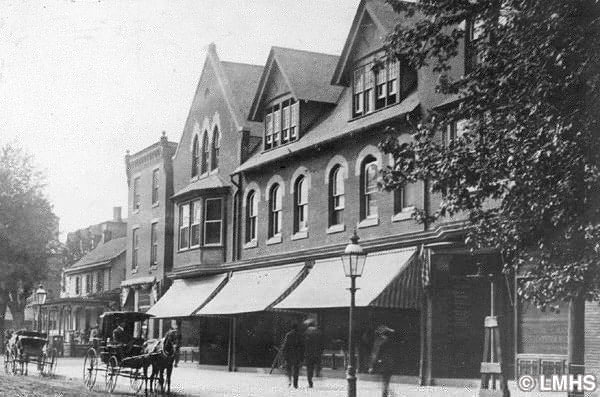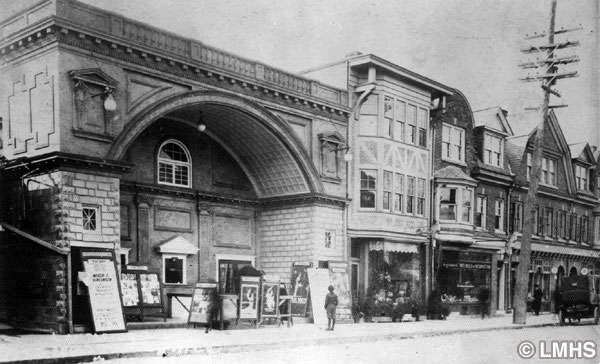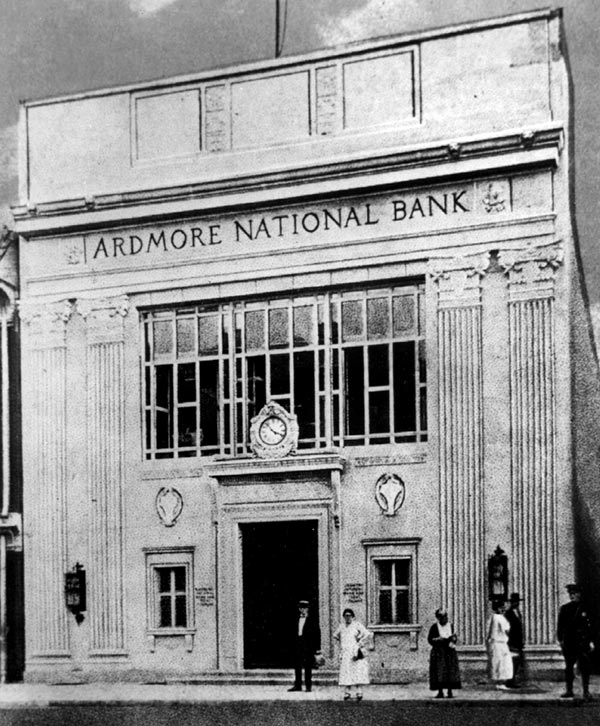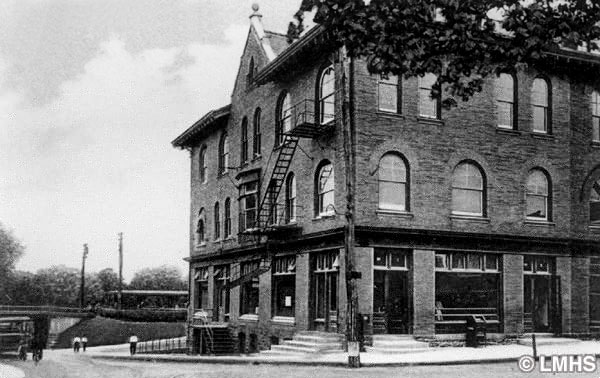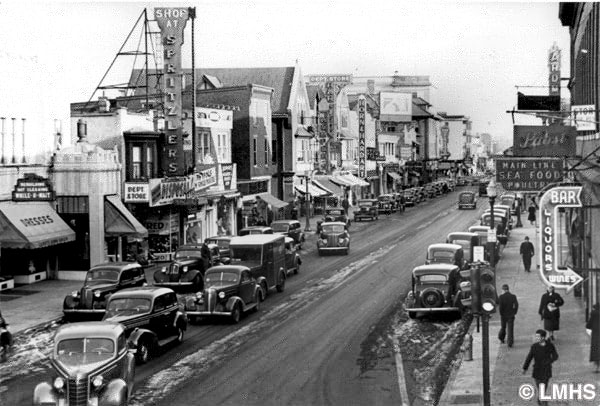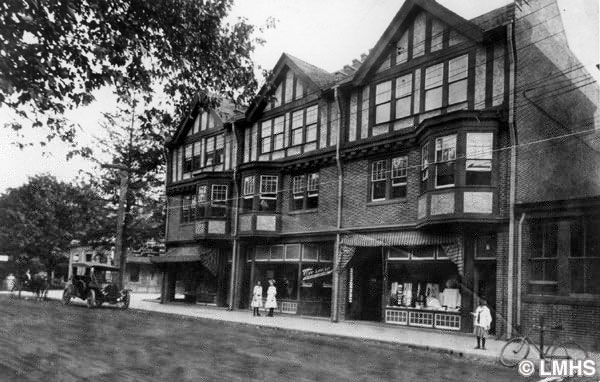Ardmore
Ardmore began on 410 acres of land bought by Richard Davis in 1686 from five Welshmen for 32 pounds, 16 shillings. One of the few local towns without a Welsh name, the village’s original name was Athensville, a nod to the fascination with the Greek revival style movement of the time (1811). William J. Buck reported in his 1884 history, “Athensville is situated on the Lancaster turnpike, seven miles from Philadelphia, and is the largest village in the township. It contains [at the center] 8 houses, three stores and one hotel.”

The first roads were but trails, and only horse and foot transportation were available. Conditions were impossible: dusty in hot summer, muddy after rains. The settlement of Lancaster led to a demand for an adequate highway that led there from Philadelphia. In 1796, the Lancaster Turnpike (first one constructed in America) allowed ponderous Conestoga wagons to carry merchandise and interior bound settlers.
That important progress led to a line of inns and taverns along the route to serve drivers and their stage coach passengers. None but the General Wayne remain; the others were replaced by charmless commercial structures.
Early Arrivals
The original settlers of the area were Welshmen who came to work in the neighboring farms and the thriving mill industry along Mill Creek. Then followed a wave of Germans who contributed their industrial skills. Next the Irish added their abilities and found work in the hotels and staffed the lavish estates built in the mid 1800s.
Later Expansion
About the same time, the establishment of railroad systems added to Ardmore’s expansion and prosperity. The first Board of Commissioners met in 1900 (at the General Wayne) to establish a local government. The same year, The Autocar Works relocated from Pittsburgh, attracted by good roads, a high grade of labor supply, the closeness to Philadelphia and a location on the main line of the Pennsylvania Railroad. Ardmore is a popular residential area with a lively business center.


St. Georges

St. Georges was a large, beautiful, wooded tract near the corner of Montgomery Avenue (then called Old Lancaster Road) and Mill Creek Road, at the end of Anderson Avenue. It is now the site of an apartment house and the Main Line Y. It had a long and interesting history, beginning as a series of inns and ending as the fine estate of the Anderson’s, a family with a long line of prominent local physicians.
80 Years of Inns
Built sometime before 1730, it began as a stage stop. Richard Hughes built a house there that year and then, as coach travel increased, converted it to an inn called Three Tuns. Here the traveler could obtain lodging, food, cider, punch, toddies and stronger liquids. It also served as the post office and unofficial community center. In 1759, Mr. Hughes announced the property was for sale. It included a “30 x 20 foot house with cellar, a fine spring of excellent water with an adjoining dwelling house, frame barn and four stables.”
It was sold that year to Francis Holton, a Philadelphia tavernkeeper who renamed it The Prince of Wales. In 1772, the property was sold to Philip Syng, the noted Philadelphia silversmith. Syng used it as his country residence, enjoying the healthy climate and proximity to a pleasant village. Eleven years later, it was bought by Capt. Robert McAfee who reopened it as a tavern, The Green Tree. In 1797, Godfrey Lainhoff was the next owner, who called his inn St. Georges.
The Anderson Estate

In 1811, the building was purchased by Dr. Joseph Anderson and occupied for five generations by Andersons. It was described in an 1897 book as “a quiet and rustic estate, a plesant contrast to the modern life in the suburb of Ardmore. It features koletaria, Irish yew trees, magnolias, a pecann nut tree, a very large persimmon tree, with english canoe-birch trees to brighten the lawn.”
It was razed in the 1950s.
Ardmore’s Gingerbread Age
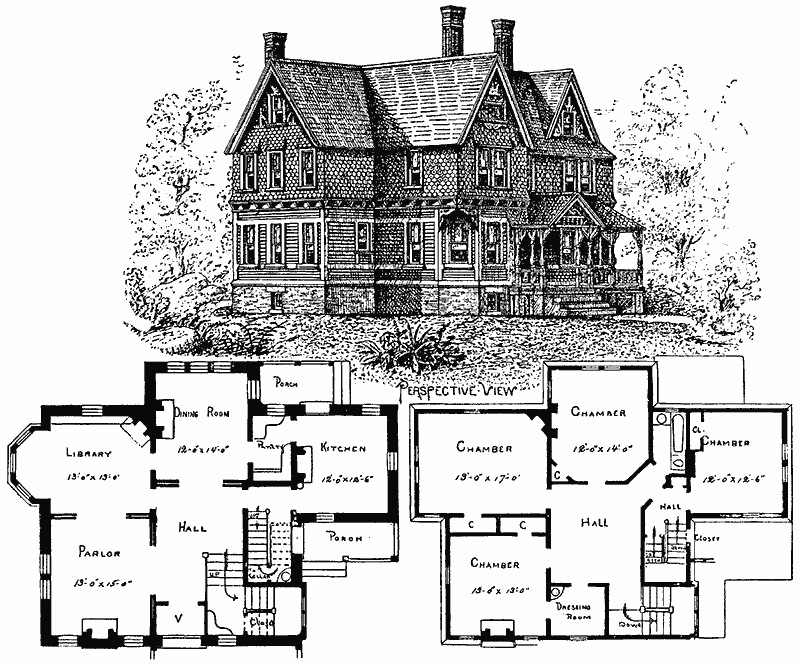
Ardmore has retained a number of examples of the wooden houses of “The Gingerbread Age.” From the mid 1800s through the end of the century, as the suburbs were burgeoning, there was a need for tastefully designed, practical housing at moderate cost. Because Victorians admired the English and American Queen Anne styles of domestic architecture, there was a growing housing market. For those who could not afford an architect (too expensive, too difficult, too time consuming) one could buy plans books, choose a style and have a local builder put up the house. There were hundreds of designs available; some books also featured designs for gates, posts, inside doors, hardware and bookcases for the average woodworker to follow. A medium quality home could be built, complete, for $2,000 to $5,000. There are no building records, though, for these:




Businesses
Along a short commercial stretch of “The Pike” in Ardmore, businesses are shown in approximately their original locations, keyed to a 1926 map. A few of the establishments are in business today.



